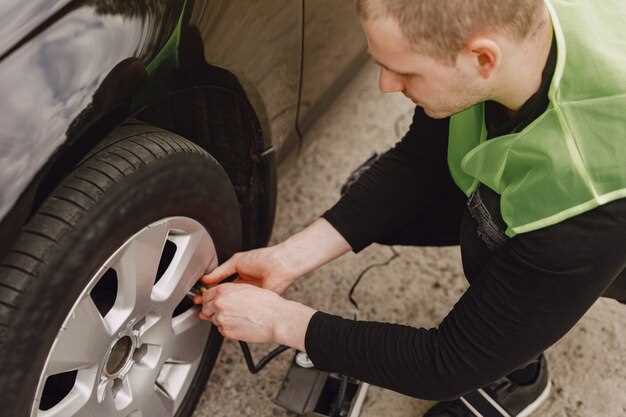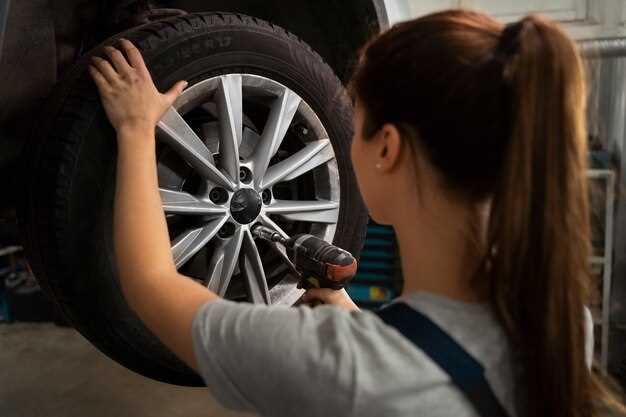
Choosing the right wheel offset for your vehicle is a crucial decision that can significantly impact both performance and aesthetics. Wheel offset refers to the distance between the wheel’s mounting surface and the centerline of the wheel. Understanding this concept is essential for ensuring optimal handling, comfort, and tire wear, while also achieving the desired look for your car.
Incorrect wheel offset can lead to various issues, including poor steering response, increased tire wear, and potential clearance problems with suspension components. It is vital to strike a balance that caters to your specific driving needs, whether you’re seeking improved performance for racing or simply enhancing your vehicle’s appearance for daily driving. This guide will walk you through the fundamental aspects of wheel offset, helping you make an informed choice tailored to your vehicle.
We’ll explore different types of wheel offsets–positive, negative, and zero–and their implications for your vehicle’s suspension geometry. Additionally, we will cover factors that influence your decision, such as the type of driving you do, your vehicle’s specifications, and your personal style. Equip yourself with knowledge and make the right selection that will elevate your driving experience.
Understanding Wheel Offset and Its Impact on Vehicle Performance

Wheel offset refers to the distance between the wheel’s mounting surface and the centerline of the wheel. It is a critical factor in determining how a wheel will fit onto a vehicle and can significantly influence various aspects of vehicle performance, including handling, ride quality, and overall stability.
There are three types of wheel offsets: positive, negative, and zero. Positive offset means the mounting surface is closer to the wheel’s street side, pushing the wheel inward towards the vehicle. Negative offset, on the other hand, indicates that the mounting surface is further away from the street side, extending the wheel outward from the vehicle. Zero offset is when the mounting surface is aligned with the centerline of the wheel.
The right wheel offset can improve vehicle handling, particularly during cornering. A positive offset will generally enhance stability by keeping the center of gravity closer to the vehicle’s center line, which can reduce body roll. Conversely, a negative offset can widen the vehicle’s stance, potentially increasing grip in some scenarios, but it may also lead to excessive tire wear and alignment issues if not managed properly.
Additionally, wheel offset plays a vital role in brake clearance and suspension geometry. Incorrect offset can impede brake performance, causing caliper clearance issues, while also affecting the vehicle’s ability to maintain optimal suspension travel. This misalignment can lead to understeer or oversteer, negatively impacting driver control and safety.
It’s essential to select a wheel offset that is compatible with your vehicle’s specifications. Changing the factory offset can result in necessary modifications to suspension components, wheel bearings, and even the vehicle structure. Always consider how the desired changes can affect not just aesthetics, but also overall vehicle performance and reliability.
How to Measure Your Current Wheel Offset Accurately
Measuring your current wheel offset is crucial for ensuring proper fitment and performance of your vehicle. Here’s a step-by-step guide to accurately measure your wheel offset.
1. Gather Tools: You will need a measuring tape or caliper, a straight edge (like a ruler or a flat board), and a notepad for recording measurements. Ensure your vehicle is parked on a level surface with the wheels straight.
2. Identify Wheel Specifications: Before measuring, check the specifications of your current wheels. Look for manufacturer markings that may indicate the offset, but fine-tuning with a manual measurement will enhance accuracy.
3. Mark Wheel Center: Use a straight edge to find the centerline of the wheel. Measure the total width of the wheel from one bead seat to the opposite bead seat and divide by two to determine the centerline. Mark this point.
4. Measure Backspacing: Backspacing is the distance from the wheel’s mounting surface to the back edge of the wheel. Place the straight edge across the back of the wheel and measure from the straight edge down to the mounting surface. Record this value.
5. Measure Wheel Width: Measure the overall width of your wheel from outer bead to outer bead and record this measurement. Make sure to measure accurately at the widest point.
6. Calculate Offset: With the backspacing and wheel width measurements, calculate the offset using the formula:
Offset = Backspacing – (Wheel Width / 2)
This calculation will give you the offset in millimeters. A positive value indicates that the mounting surface is towards the front of the wheel, while a negative value indicates it is towards the rear.
7. Verify Measurements: To ensure accuracy, recheck your measurements. Consistency is key, so take multiple measurements and average them if necessary. This can prevent mistakes that could affect your vehicle’s performance.
By following these steps, you can accurately determine your wheel offset, which is essential for selecting the right wheels for your car and ensuring optimal handling and aesthetics.
Selecting the Right Wheel Offset for Various Driving Conditions

Choosing the correct wheel offset is crucial for optimizing a vehicle’s performance across different driving conditions. The wheel offset affects handling, stability, and tire wear, making it essential to consider various scenarios when selecting the appropriate specifications.
City Driving: For urban environments where frequent stops and sharp turns are common, a more positive offset is recommended. This configuration helps center the wheel within the wheel arch, which improves steering response and minimizes scrub radius. A moderate positive offset can enhance stability when navigating tight corners and reduces the likelihood of tire rubbing against wheel wells.
Off-Road Driving: Vehicles intended for off-road adventures benefit from a negative offset. This adjustment pushes the wheels outward, increasing track width and providing improved stability over uneven terrain. A wider stance enhances grip and reduces the chance of rollovers, making a negative offset ideal for tackling rugged landscapes.
Highway Driving: For long highway journeys, a neutral to slightly positive offset is advantageous. This placement allows for better aerodynamics and fuel efficiency while maintaining adequate control at higher speeds. It balances stability and comfort, reducing vibration and enhancing handling during extended travel.
Performance Driving: Enthusiasts focused on track performance should consider a more aggressive negative offset to maximize tire contact with the road. This adjustment can enhance cornering grip and overall responsiveness, allowing for faster lap times. However, it may lead to increased tire wear and necessitate adjustments in suspension settings.
Winter Driving: During winter months, vehicles often benefit from a neutral offset. This setting helps prevent the wheels from extending too far outside the wheel arch, reducing the risk of snow buildup and improving traction. Additionally, maintaining a narrower track can assist in navigating slippery surfaces.
In conclusion, selecting the right wheel offset involves understanding the specific demands of different driving conditions. Each application may require a different approach, and consulting with professionals or utilizing vehicle guides can ensure optimal performance and safety.


